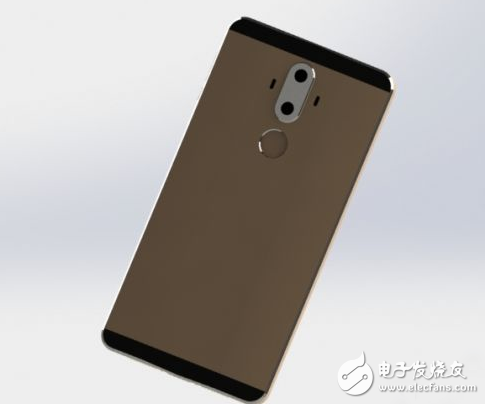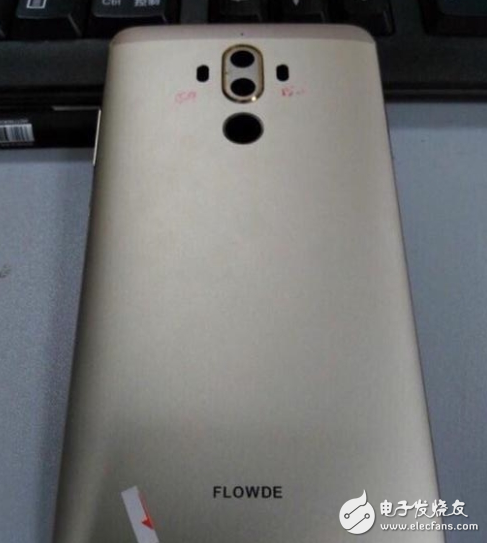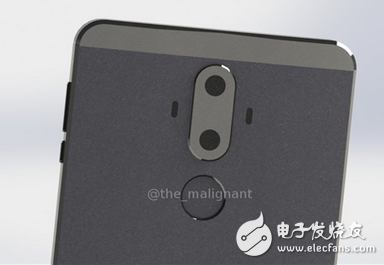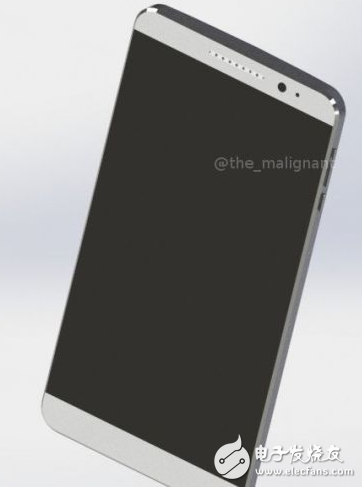For Huawei, the most important thing in the second half of the year is probably to prepare an upgraded version of Mate 8, and what is Mate 9 like? I am afraid I haven't run with a dual camera.
Now, the foreign user @the_malignant sent the so-called Mate 9 rendering on Twitter, which is still the rear fingerprint. The dual lens provided is a vertical design, and the left and right sides of the lens have LED flash and laser focusing module.

This Mate 9 rendering is very similar to the spy photos of the previous exposure, and the front of the fuselage adopts the ID no border design, and the physical home button does not appear below the touch screen. not bad.
Overall, the design of this Mate 9 is still eye-catching, and the style that Huawei wants to launch is still high-end atmosphere.

In addition, the latest news from the source shows that Mate 9 will meet with you as soon as possible in September. Of course, this is all the progress is smooth, it will be equipped with dual cameras (really double 20 million pixels?), but There will be no Leica blessing, after all, it will be misplaced with the P series, and its screen size is consistent with Mate 8.
As for the processor, Mate 9 will launch the Kirin 960. The biggest difference between it and the Kirin 955/950 is the improvement of the frequency. Of course, there have been reports that the Kirin 960 will natively support the CDMA network, integrate the LTE Cat.12 baseband, and still adopt the 16nm process. Its core architecture has become a combination of Artemis+A53, and the GPU has also been upgraded to eight cores. As for the facts. What is it, we will wait and see.
Last but not least, Huawei is also planning to equip the Mate 9 with a heavyweight feature, which is a super fast charge that can fill a 3000 mAh battery in half in 5 minutes.


Car Antenna, an integral part of modern automotive design, serves as a vital link between the vehicle and the outside world. It is responsible for capturing and transmitting radio frequency signals, enabling drivers and passengers to enjoy a seamless experience in communication and entertainment. This comprehensive introduction to car antennas explores their key features, such as durability, versatility, and compatibility with different systems, as well as the various types available, including AM/FM antennas, satellite radio antennas, GPS antennas, and cellular phone antennas. Furthermore, we examine the diverse applications of car antennas, from basic radio reception to advanced telematics systems, and discuss their significance in the automotive industry, where they have become increasingly important for safety, convenience, and connectivity.
1. Key Features of Car Antennas
- Signal Reception: Car antennas are designed to effectively receive radio frequency (RF) signals from various sources, including AM/FM radio stations, satellite navigation systems, and even cellular networks for in-car connectivity.
- Durability: Given their exposure to varying weather conditions and road vibrations, car antennas are constructed with durable materials to ensure reliable performance over time.
- Aesthetics: Modern car antennas are not only functional but also contribute to the overall aesthetic appeal of the vehicle, often blending seamlessly into the vehicle's design.
2. Types of Car Antennas
- Standard AM/FM Antennas: These are the most common type, typically mounted on the roof or trunk of the car and optimized for receiving AM and FM radio signals.
- Satellite Antennas: For vehicles equipped with satellite radio or navigation systems, dedicated satellite antennas are installed to capture signals from orbiting satellites, providing a wider range of programming options and accurate navigation.
- Multifunction Antennas: As technology advances, multifunction antennas that integrate multiple functionalities, such as AM/FM radio, satellite navigation, and even wireless charging, are becoming increasingly popular.
- Smart Antennas: Advanced smart antennas utilize beamforming and other advanced technologies to dynamically adjust their reception patterns, optimizing signal quality and reducing interference.
3. Applications of Car Antennas
- Radio Entertainment: The primary application of car antennas is to enable drivers and passengers to enjoy a wide variety of radio programming, including music, news, sports, and talk shows.
- Navigation and Communication: Satellite-based antennas facilitate accurate navigation and communication with emergency services, ensuring drivers stay informed and connected even in remote areas.
- Vehicle-to-Everything (V2X) Communication: In the future, car antennas may play a critical role in V2X communication systems, enabling vehicles to communicate with other vehicles, infrastructure, and pedestrians, enhancing road safety and traffic efficiency.
Car Antenna,car radio Fm/AM antenna,car satellite tv antenna,High gain car radio antenna
Yetnorson Antenna Co., Ltd. , https://www.yetnorson.com